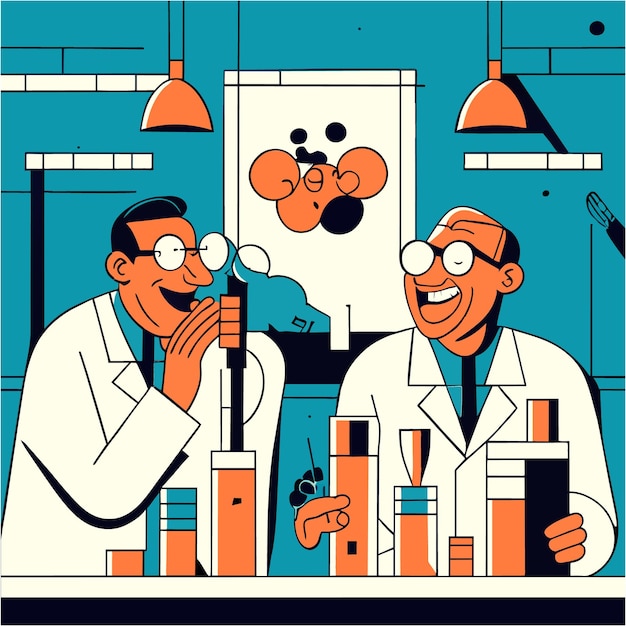
Image Source: FreeImages
In today’s rapidly advancing world, the realms of science and technology continue to astound us with their groundbreaking innovations. From AI-powered virtual assistants to self-driving cars, the future seems to be unfolding before our very eyes. In this article, we will delve into the exciting developments that are shaping our world and explore the incredible marvels that science and technology have to offer.
Unleashing the Power of Artificial Intelligence
Artificial Intelligence (AI) has emerged as one of the most notable advancements in recent years. With machines capable of learning, reasoning, and problem-solving, the possibilities are endless. AI has become an indispensable tool in various industries, from voice-activated virtual assistants like Siri and Alexa to complex algorithms used in healthcare and finance.
The future of AI holds even greater potential. As technology continues to evolve, AI will likely become more sophisticated, enabling machines to understand and interact with humans on a deeper level. Imagine a world where AI-powered personal assistants can anticipate our needs, perform complex tasks, and provide valuable insights in real-time.
In the field of healthcare, AI has the power to revolutionize patient care. With the ability to analyze vast amounts of medical data, AI algorithms can assist doctors in diagnosing diseases, predicting treatment outcomes, and even discovering new drugs. This has the potential to save countless lives and improve the overall quality of healthcare.
AI is also making an impact in the finance industry. With AI-powered algorithms, financial institutions can detect fraudulent activities, make accurate predictions in stock markets, and automate tedious tasks such as data entry and reconciliation. This not only increases efficiency but also reduces the risk of human error.
As AI continues to advance, ethical considerations become increasingly important. We must ensure that AI systems are designed and used responsibly, with a focus on transparency, fairness, and accountability. The development of AI ethics guidelines and regulations will play a crucial role in shaping the future of this technology.
The Internet of Things: A Connected World
The Internet of Things (IoT) has revolutionized the way we interact with our surroundings. By connecting everyday objects to the internet, we now enjoy a level of convenience and control like never before. From smart homes that adapt to our preferences to wearable devices that track our health, the IoT has woven itself seamlessly into our lives.
The future of the IoT is promising. As more devices become connected, we can expect an even greater level of integration and automation. Imagine a world where your alarm clock communicates with your coffee maker, ensuring that a fresh cup of coffee is ready the moment you wake up. Or a world where your refrigerator automatically orders groceries when it detects that you’re running low on certain items.
In the field of healthcare, the IoT has the potential to transform patient care. With wearable devices that monitor vital signs and collect real-time data, doctors can remotely track patients’ health conditions and provide timely interventions. This can lead to early detection of diseases, more personalized treatments, and improved patient outcomes.
The IoT also has significant implications for sustainability. By connecting energy-efficient devices and optimizing their usage, we can reduce energy consumption and minimize our carbon footprint. Smart grids can intelligently distribute electricity, ensuring that it is used efficiently and minimizing waste.
However, as the IoT expands, concerns about data privacy and security arise. With countless devices collecting and transmitting data, it is crucial to implement robust cybersecurity measures to protect sensitive information. Striking a balance between innovation and security will be a key challenge in the future of the IoT.
Electric Vehicles: Driving a Sustainable Future
The automotive industry is undergoing a major transformation with the rise of electric vehicles (EVs). With zero emissions and advances in battery technology, EVs have become a viable alternative to traditional combustion engine vehicles. As concerns over climate change grow, the potential impact of EVs on reducing carbon emissions is immense.
The future of electric vehicles is promising. As battery technology continues to improve, EVs will have longer ranges and faster charging times, making them even more convenient for everyday use. With the development of solid-state batteries, which promise higher energy densities and improved safety, we can expect even greater advancements in the coming years.
The adoption of EVs is not limited to personal transportation. Electric buses and trucks are gaining traction in the transportation industry, offering a greener and more sustainable alternative to traditional vehicles. In addition, governments around the world are incentivizing the shift towards EVs by implementing policies such as tax credits and subsidies.
The widespread adoption of EVs will have a significant impact on the environment. By reducing greenhouse gas emissions from transportation, we can mitigate the effects of climate change and improve air quality in cities. Additionally, EVs offer the potential for renewable energy integration, as they can serve as mobile energy storage units, helping to balance the grid and make better use of renewable resources.
However, challenges remain in the transition to electric vehicles. The availability of charging infrastructure needs to be expanded to support the growing number of EVs on the road. Battery recycling and disposal also present environmental concerns that need to be addressed. Collaborative efforts between governments, manufacturers, and consumers will be crucial in overcoming these challenges and accelerating the adoption of EVs.
Progressing Towards Quantum Computing
Quantum computing represents a significant leap forward in computational power. By harnessing the properties of quantum mechanics, quantum computers have the potential to solve complex problems at an unprecedented speed. From cracking encrypted codes to simulating molecular structures, this technology holds immense promise.
The future of quantum computing is still in its early stages, but researchers are making significant progress. Quantum computers are becoming more stable and reliable, with increased numbers of qubits (the basic unit of quantum information) and longer coherence times. This enables the execution of more complex algorithms and the ability to solve problems that were previously intractable.
Quantum computing has the potential to revolutionize various industries. In the field of drug discovery, quantum computers can simulate the behavior of molecules, leading to the development of more effective drugs and personalized medicine. In finance, quantum algorithms can optimize investment portfolios and perform risk analysis with unprecedented accuracy.
The impact of quantum computing on cybersecurity cannot be overstated. Quantum computers have the potential to break the encryption algorithms that currently protect sensitive information. As a result, researchers are actively working on developing quantum-resistant encryption methods to ensure the security of data in a post-quantum computing era.
However, there are still significant challenges to overcome before quantum computers become commercially viable. The technology is highly sensitive to environmental disturbances, requiring extremely low temperatures and precise control of electromagnetic fields. Scaling up quantum computers to a practical size and reducing error rates are also ongoing research areas.
Augmented and Virtual Reality: Transforming Our Perception
Augmented Reality (AR) and Virtual Reality (VR) have transformed the way we perceive and interact with our environment. These technologies create immersive experiences by overlaying digital content onto the real world (AR) or creating entirely virtual environments (VR). From immersive gaming experiences to virtual tours of real estate properties, AR and VR have opened up new possibilities in various sectors.
The future of AR and VR holds immense potential for innovation. As the technology continues to advance, we can expect more realistic and immersive experiences. Imagine being able to try on clothes virtually before making a purchase or attending virtual meetings with colleagues from around the world, feeling as if you’re in the same room.
In the field of education, AR and VR can revolutionize the way we learn. Students can explore historical events by virtually stepping into the past or visualize complex scientific concepts in a more tangible way. This hands-on approach to learning enhances engagement and understanding, making education more accessible and enjoyable.
AR and VR also have significant applications in healthcare. Surgeons can use AR overlays to visualize patient anatomy during complex procedures, improving precision and reducing the risk of complications. Patients can benefit from VR therapy, which uses virtual environments to treat conditions such as phobias, PTSD, and chronic pain.
However, there are still challenges to overcome in the widespread adoption of AR and VR. The cost of hardware, such as headsets and sensors, can be a barrier for many consumers. In addition, concerns about motion sickness and the potential for addiction to virtual experiences need to be addressed. As the technology becomes more accessible and user-friendly, these barriers are likely to diminish.



